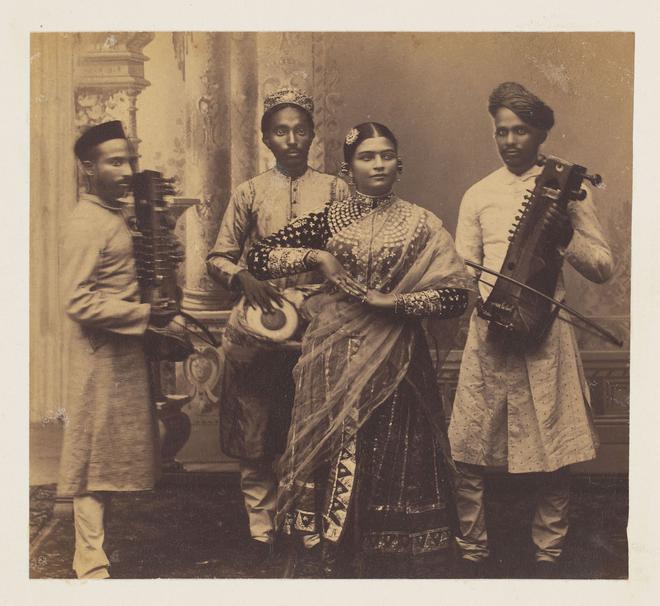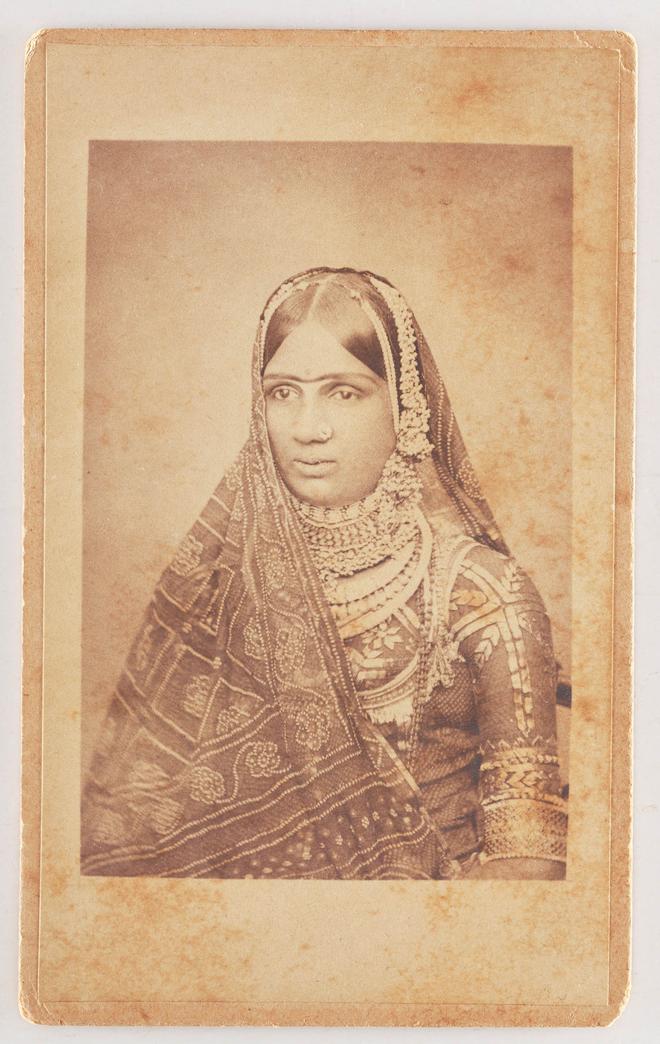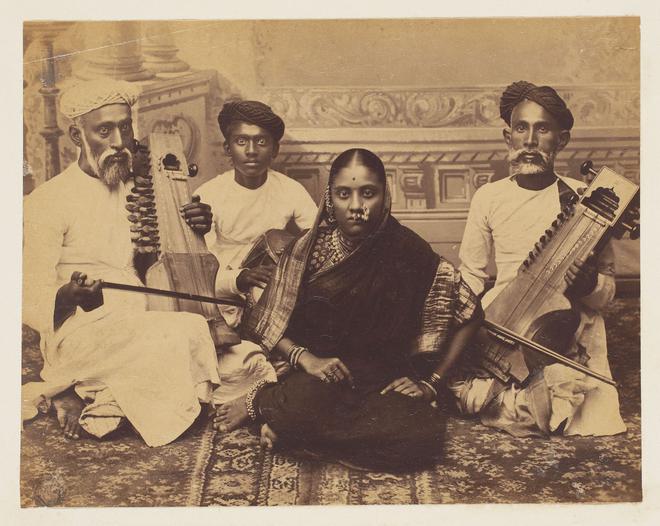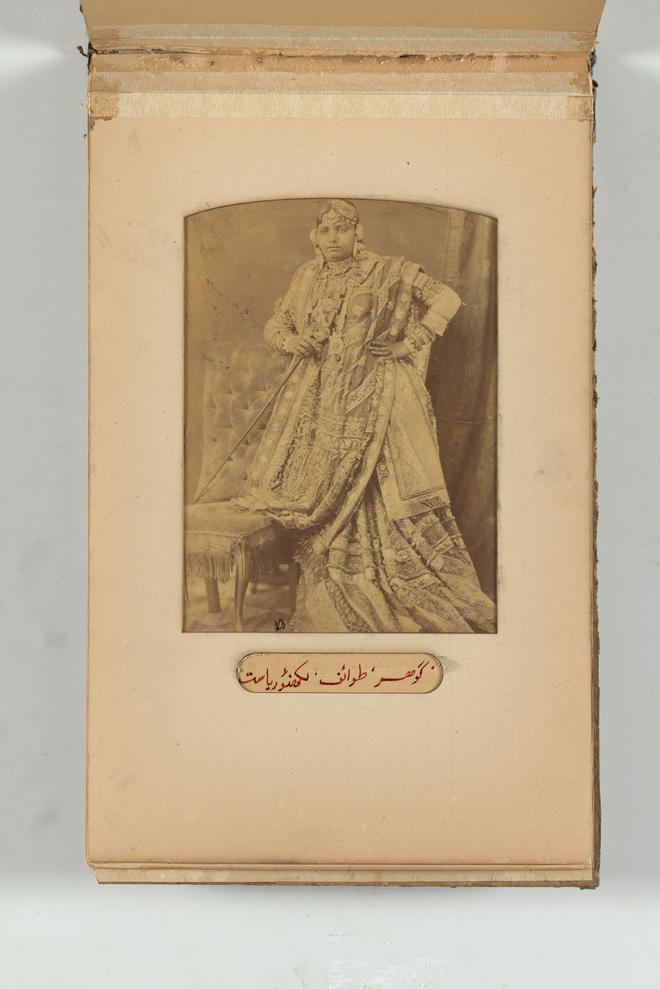In the tapestry of Indian history, the courtesans, often referred to as tawaifs, stand as guardians of a legacy that transcends mere entertainment. Their influence permeated not only the cultural sphere, but also left an indelible mark on design, fashion, and traditional crafts, between 500 BCE and the 20th century. During the research for my book Courting Hindustan: The Consuming Passions of Iconic Women Performers of India, I developed a profound understanding of the unique position they occupied in society.
I discovered that the courtesans of the Mughal courts were often adorned in the finest Indian textiles: rich silks, intricately woven brocades, and vibrant handloom saris. They would showcase these textiles during cultural gatherings, festivals and royal events, attracting the attention of nobles and royalty. To perform in, they favoured jamdani adorned with floral motifs, geometric patterns, and intricate borders, or Dhaka muslin, both of which allowed for graceful ease of movement.
Begum Samru, the ruler of the kingdom of Sardhana in the 18th century — who began her career as a ‘nautch girl’ — occupies a chapter in Courting Hindustan. Petite and slender, she appeared in public draped in brocades woven with elaborate patterns in gold or silver threads. A keen statesman, she cannily adopted the language and religious customs of the dominant European forces, mainly the British. However, she often used traditional Mughal clothing to signal her proximity to the Mughal emperor Shah Alam II. So, while she wore her pashmina with pride, she also ordered chintz, the glazed cotton fabric imported from India and favoured by the British.

Style icons of their time
Courtesans were avid patrons of jewellery. Diamonds, emeralds, rubies and pearls were crafted by skilled artisans into elaborate pieces — from maang tikkas, naths, jhumkas, and hath phools, to chokers, kamarbandhs, and anklets — that they wore as a symbol of their status and wealth. They also popularised pieces such as the chhapkā or jhūmar.

There is one rather touching anecdote about Begum Akhtar, the 20th-century legend of Hindustani classical music, and her jewels. Between music seasons, she used to leave a satlada (seven-stringed pearl necklace) of tremendous value, a gift from the Nawab of Rampur, with sitarist Arvind Parikh. He, in turn, would offer her money to smooth over lean times. When the concert season started again, Begum Akhtar would return the borrowed money in exchange for the necklace.
Courtesans were the style icons of their time, a role to which they brought as much dedication as they did their art. The most prominent cultivated a signature style, which has been immortalised in literature. Consider Mirza Hadi Ruswa’s creation, Umrao Jaan Ada (in the eponymous Urdu novel), who was known for her rich silks, intricately embroidered costumes and exquisite jewellery. Or Vasantasena, the protagonist of the Sanskrit play Mrichchakatikam, who filled up a child’s clay cart with her jewels.

They were the spiritual foremothers of Gauhar Jaan, one of the first recording artists of India, whose glamorous photos were printed on matchbox covers around the world. Frederick William Gaisberg, an engineer with Gramophone and Typewriter Ltd, notes in his memoirs that Jaan arrived to record her songs wearing the finest outfits, and she never repeated her jewels.

Gouhar’s jewels

Inspiring Sanjay Leela Bhansali
In the 19th century, courtesans from the subcontinent had the cultural cache of movie stars, influencing fashion, style, and even politics. Dutch exotic dancer and alleged war spy, Mata Hari, fabricated a past in which she was born an Indian princess. In her gem-encrusted head dresses and sari-like drapes, she clearly took inspiration from the South Asian courtesan.
In Veena Talwar Oldenburg’s 1990 paper, Lifestyle as Resistance: The Case of the Courtesans of Lucknow, the author cites civic tax records from 1858-77 to reveal that the tawaifs were, in fact, the largest and highest tax paying class, with “the largest individual earnings of anyone within the city”.
By the 1940s, the courtesans’ glory days had come to an end, but their legacy continues to inspire designers and artists — and most recently, director Sanjay Leela Bhansali. His upcoming Netflix period drama, Heeramandi, will take viewers behind the storied walls of a Lahore tawaif-khaana, as the freedom struggle gathers momentum in the subcontinent.
On April 26, the writer will give a lecture on courtesans as part of Sarmaya Talks. At Joss, Mumbai, at 6 p.m.
The fourth in a series of columns by sarmaya.in, a digital archive of India’s diverse histories and artistic traditions.







